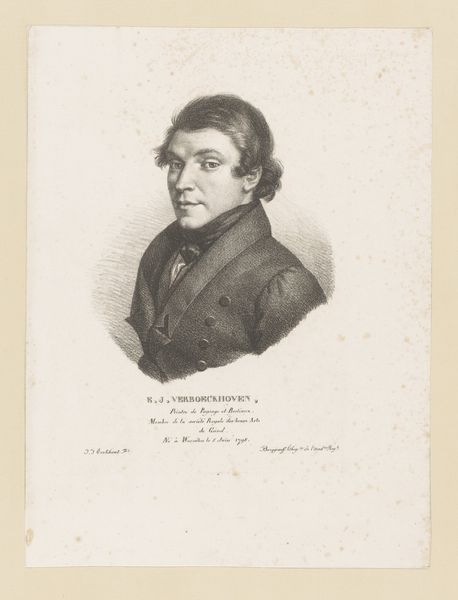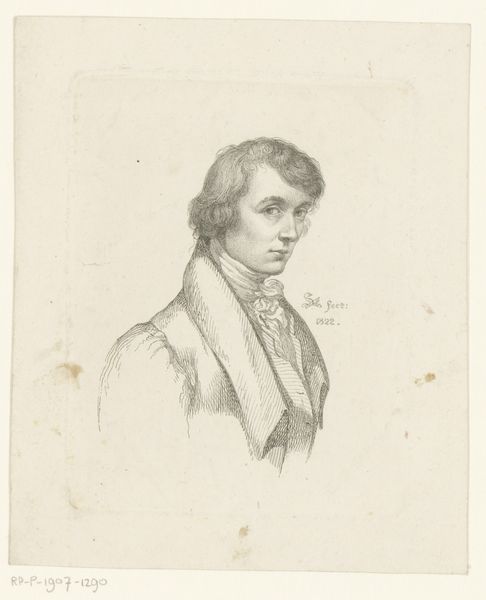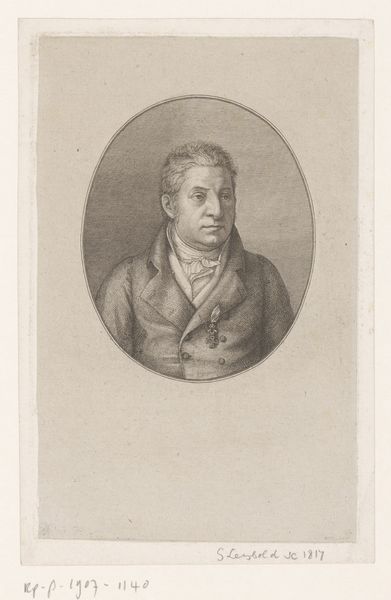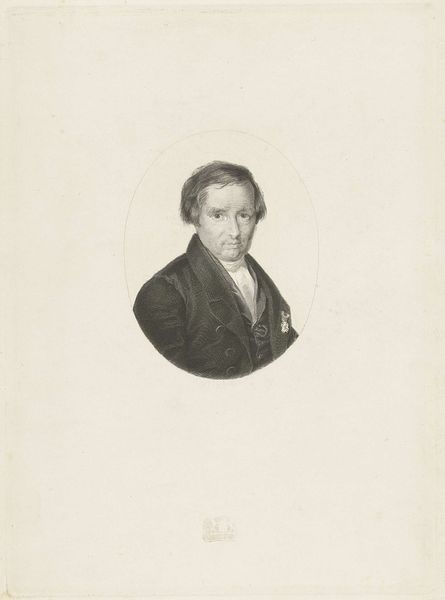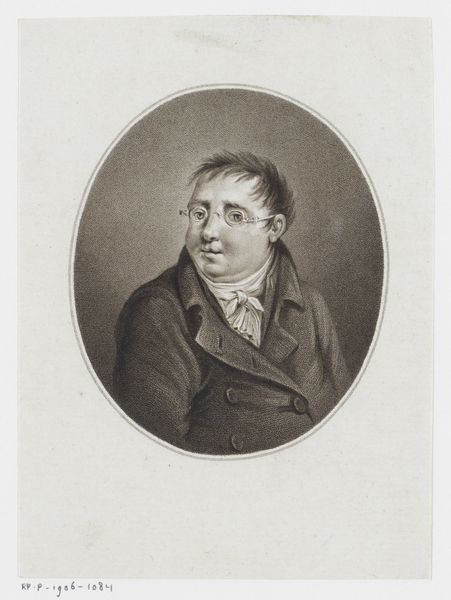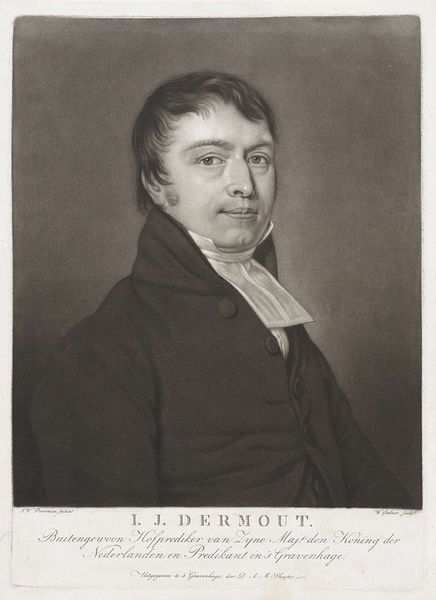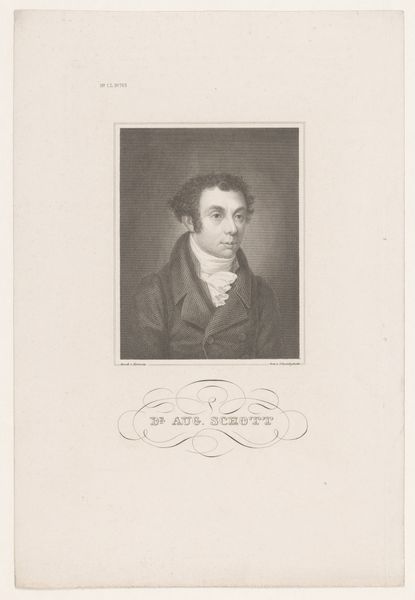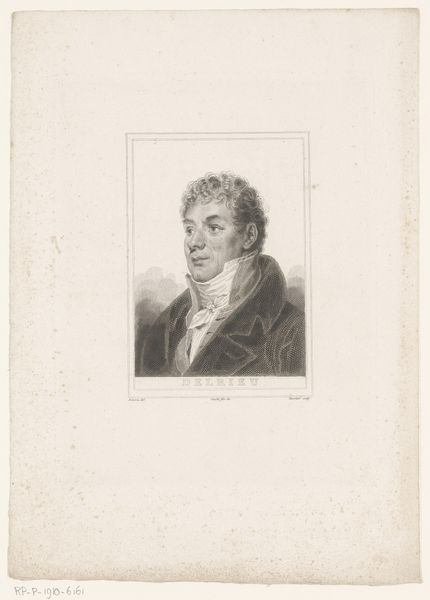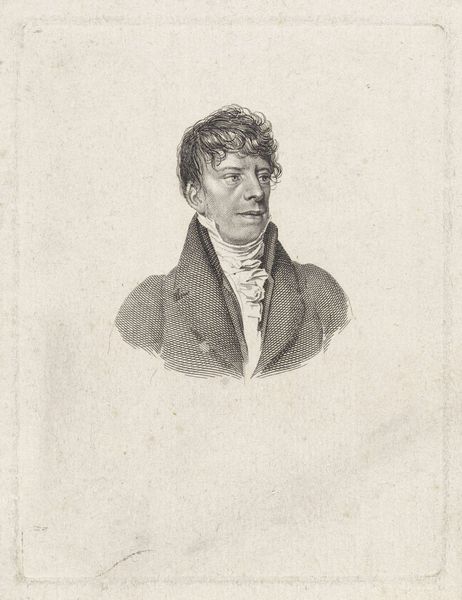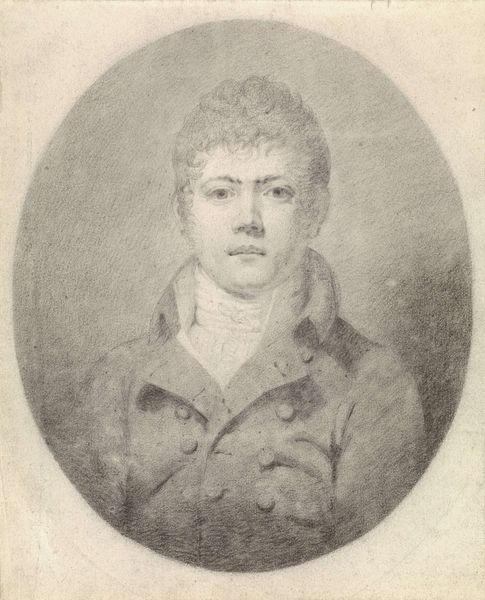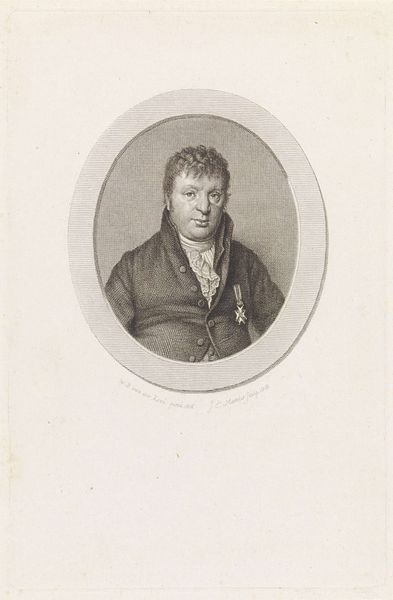
drawing, pencil
#
portrait
#
drawing
#
neoclacissism
#
figuration
#
pencil drawing
#
pencil
#
academic-art
#
realism
Dimensions: height 198 mm, width 132 mm
Copyright: Rijks Museum: Open Domain
Curator: This is a portrait of Casper Vreedenberg, an exquisite pencil drawing made sometime between 1789 and 1822. It's part of the Rijksmuseum's collection. Editor: It strikes me as quite austere, almost severe, yet there's a softness in the way the light falls on his face. Curator: Indeed. The portrait adheres to neoclassical ideals with its emphasis on realism and idealized representation. It’s a clear example of academic art gaining prominence. We observe a focus on rationality and order, reflecting a shift in artistic values of the late 18th century. Editor: Yes, but even within that framework, the gaze is so direct. What social dynamics were at play when it was created? Who was Casper Vreedenberg? He appears like the quintessential representation of middle class in that era, what position he played in society? Curator: Jan Willem Caspari was active as draughtsman. We know precious little of the circumstances of its creation or his position, however; this may explain his determined countenance and the need to solidify the sitters position in society. The rise of the middle class commissioned artists for status purposes. Editor: It's a fascinating detail and also interesting to note how such realism in portrayal worked as a strategy for legitimizing social ascent and exercising social power at that time. And those beautifully rendered lapels – that's certainly meant to communicate prosperity, right? It adds such interesting commentary on masculinity and class during that period. Curator: I agree. This work's historical value lies as much in its artistic merit as in what it tells us about societal structures. Art always operated in a social world, this being not only a fine drawing, but a cultural artifact too. Editor: Absolutely, thinking about how art helps to normalize and perpetuate power. That’s a great place to pause and consider this in depth, for it lets me also pause and reflect more on how powerful pencil portraitures once were for aspiring new bourgeoise like Mr. Vreedenberg here!
Comments
No comments
Be the first to comment and join the conversation on the ultimate creative platform.

